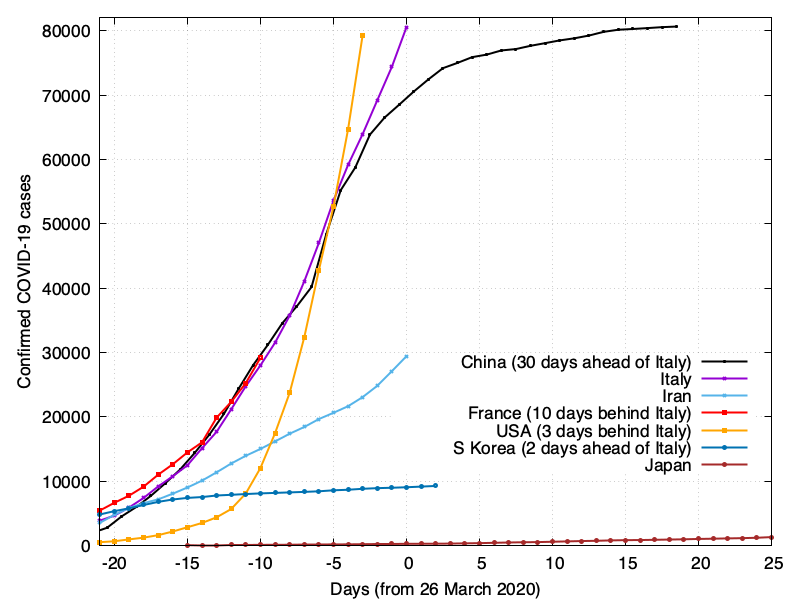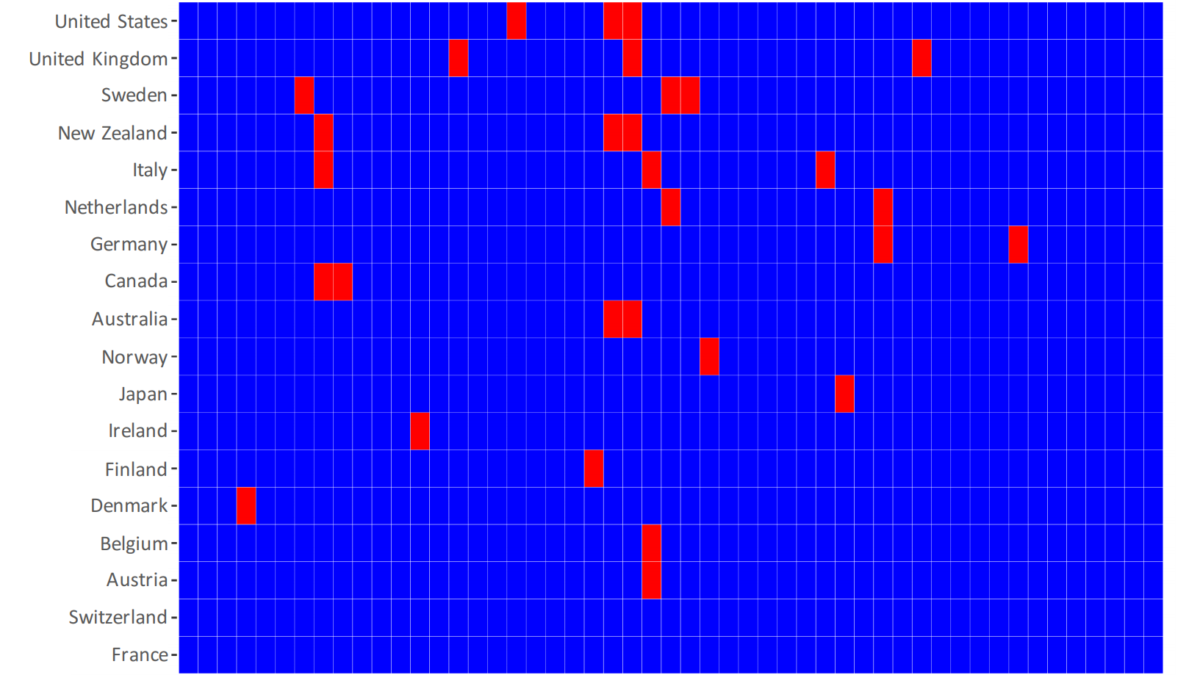Coronavirus pandemic could have caused 40 million deaths globally if left unchecked – “Health systems in all countries will be quickly overwhelmed”

By Ryan O’Hare
26 March 2020
(Imperial College London) – The outbreak of COVID-19 would likely have caused 40 million deaths this year in the absence of any preventative measures.
This is one of the findings of a new analysis by researchers at Imperial College London, which estimated the potential scale of the coronavirus pandemic across the globe, highlighting that failure to mitigate the impact could lead to huge loss of life.
The report is the twelfth to be released by The WHO Collaborating Centre for Infectious Disease Modelling within the MRC Centre for Global Infectious Disease Analysis (GIDA), Abdul Latif Jameel Institute for Disease and Emergency Analytics (J-IDEA).
Researchers included a number of scenarios, such as what would have happened if the world had not reacted to COVID-19 (the “unmitigated scenario”). They also included two scenarios incorporating social distancing, which result in a single-peaked epidemic (“mitigated scenarios”), and several scenarios for suppressing the spread of the disease that can have the largest overall impact in terms of reducing disease and deaths.
According to the unmitigated scenario, if left unchecked the virus could have infected 7 billion people and caused in the region of 40 million deaths this year. Social distancing to reduce the rate of social contacts by 40 per cent, coupled with a 60 per cent reduction in social contacts among the elderly population (at highest risk) could reduce this burden by around half. However, even at this level of reduction, health systems in all countries would be rapidly overwhelmed, the modelling revealed.
Dr Patrick Walker, an author of the report from Imperial, said: “We estimate that the world faces an unprecedented acute public health emergency in the coming weeks and months. Our findings suggest that all countries face a choice between intensive and costly measures to suppress transmission or risk health systems becoming rapidly overwhelmed. However, our results highlight that rapid, decisive and collective action now will save millions of lives in the next year”
Proven health measures
In the latest report, the team show that rapid adoption of proven public health measures – including testing and isolation of cases and wider social distancing to prevent onward transmission – are critical in curbing the impact of the pandemic.
The modelling showed that implementing measures early on can have a dramatic impact.
If all countries were to adopt this strategy at 0.2 deaths per 100,000 population per week, 95 per cent of the deaths could be averted, saving 38.7 million lives.
However, if this strategy is adopted later (1.6 deaths per 100,000 population per week), then this figure drops to 30.7 million.
“Rapid, decisive, and collective action is required by all countries to limit the effect of this pandemic,” said Professor Azra Ghani, report author from MRC GIDA.
“Acting early has the potential to reduce mortality by as much as 95 per cent, saving 38.7 million lives. At the same time, consideration needs to be given to the broader impact of all measures that are put in place to ensure that those that are most vulnerable are protected from the wider health, social and economic impacts of such action.”
The results demonstrate the burden likely to be faced by low- and middle-income countries. For most scenarios, the COVID-19 pandemic is likely to overwhelm already over-stretched health systems in these settings and the wider social and economic costs of suppression will be high.
Professor Neil Ferguson, Director of MRC GIDA and J-IDEA at Imperial, said: “Our research adds to the growing evidence that the COVID-19 pandemic poses a grave global public health threat. Countries need to act collectively to rapidly respond to this fast-growing epidemic. Sharing both resources and best practice is critically important if the potentially catastrophic impacts of the pandemic are to be prevented at a global level.”
Report author Charlie Whittaker, a PhD student at Imperial, added: “This work highlights the need for swift and effective implementation of suppression measures if catastrophe is to be averted, but also that serious consideration needs to be given to these strategies – particularly in resource poor settings where the wider societal and economic impact of such intensive approaches might be higher.”
The researchers stress the models are not predictions of what will happen, but they illustrate the magnitude of the problem and the benefits of rapid, decisive and collective action.
The team is now sharing individual country outputs, making the data available to enable countries to use it to guide planning.
The full report ‘The Global Impact of COVID-19 and Strategies for Mitigation and Suppression’ is available on the MRC GIDA report website.
Coronavirus pandemic could have caused 40 million deaths if left unchecked
Report 12: The Global Impact of COVID-19 and Strategies for Mitigation and Suppression
26 March 2020 (Imperial College London) – The world faces a severe and acute public health emergency due to the ongoing COVID-19 global pandemic. How individual countries respond in the coming weeks will be critical in influencing the trajectory of national epidemics. Here we combine data on age-specific contact patterns and COVID-19 severity to project the health impact of the pandemic in 202 countries. We compare predicted mortality impacts in the absence of interventions or spontaneous social distancing with what might be achieved with policies aimed at mitigating or suppressing transmission. Our estimates of mortality and healthcare demand are based on data from China and high-income countries; differences in underlying health conditions and healthcare system capacity will likely result in different patterns in low income settings.
We estimate that in the absence of interventions, COVID-19 would have resulted in 7.0 billion infections and 40 million deaths globally this year. Mitigation strategies focussing on shielding the elderly (60% reduction in social contacts) and slowing but not interrupting transmission (40% reduction in social contacts for wider population) could reduce this burden by half, saving 20 million lives, but we predict that even in this scenario, health systems in all countries will be quickly overwhelmed. This effect is likely to be most severe in lower income settings where capacity is lowest: our mitigated scenarios lead to peak demand for critical care beds in a typical low-income setting outstripping supply by a factor of 25, in contrast to a typical high-income setting where this factor is 7. As a result, we anticipate that the true burden in low income settings pursuing mitigation strategies could be substantially higher than reflected in these estimates.
Our analysis therefore suggests that healthcare demand can only be kept within manageable levels through the rapid adoption of public health measures (including testing and isolation of cases and wider social distancing measures) to suppress transmission, similar to those being adopted in many countries at the current time. If a suppression strategy is implemented early (at 0.2 deaths per 100,000 population per week) and sustained, then 38.7 million lives could be saved whilst if it is initiated when death numbers are higher (1.6 deaths per 100,000 population per week) then 30.7 million lives could be saved. Delays in implementing strategies to suppress transmission will lead to worse outcomes and fewer lives saved.
We do not consider the wider social and economic costs of suppression, which will be high and may be disproportionately so in lower income settings. Moreover, suppression strategies will need to be maintained in some manner until vaccines or effective treatments become available to avoid the risk of later epidemics. Our analysis highlights the challenging decisions faced by all governments in the coming weeks and months, but demonstrates the extent to which rapid, decisive and collective action now could save millions of lives.
Appendix data sources
Data on global unmitigated, mitigated and suppression scenarios: Imperial-College-COVID19-Global-unmitigated-mitigated-suppression-scenarios.xlsx
Report 12: The Global Impact of COVID-19 and Strategies for Mitigation and Suppression


